Cape Town and Surroundings#
Photos and text by Stas Sedov,
member of the AirPano Team that is a member of the global-geography Consortium.
5 November 2021
with kind permission of AirPano
Cape of Good Hope and Cape Town surroundings
Destination — Cape Town
One of the countries available to be visited in the spring of 2021 was the Republic of South Africa. There was no quarantine at the arrival, the only thing you needed was a standard Covid-test. Thus we decided to take a risk and try to capture one of the most beautiful cities in the country, Cape Town.
And on a warm April night, being slightly stunned by an almost 24-hour journey from Moscow, I finally crawled out of the Cape Town airport and tried to mentally adjust myself to the peculiarities of driving a right-hand drive car. The head couldn't think straight and my mind wandered; it's good that there was practically no traffic on the highway, and it took me only half an hour to get to the hotel. But at the entrance to the city centre, I saw that something apparently abnormal was happening around: there were many firefighters and police cars on the side of the road, some fires were visible in the distance, everything was in smoke and it was difficult to breathe.
In the morning I learned that a fire broke out in the Table Mountain National Park just the day before my arrival. Locals talked about arson. The park itself got closed, several hundred firefighters were trying to halt the advance of the fire towards the city. The flames were also extinguished from helicopters, but unfortunately, due to strong winds, so far without much success. The library and campus of the local university, as well as several historical buildings, had already burned down.
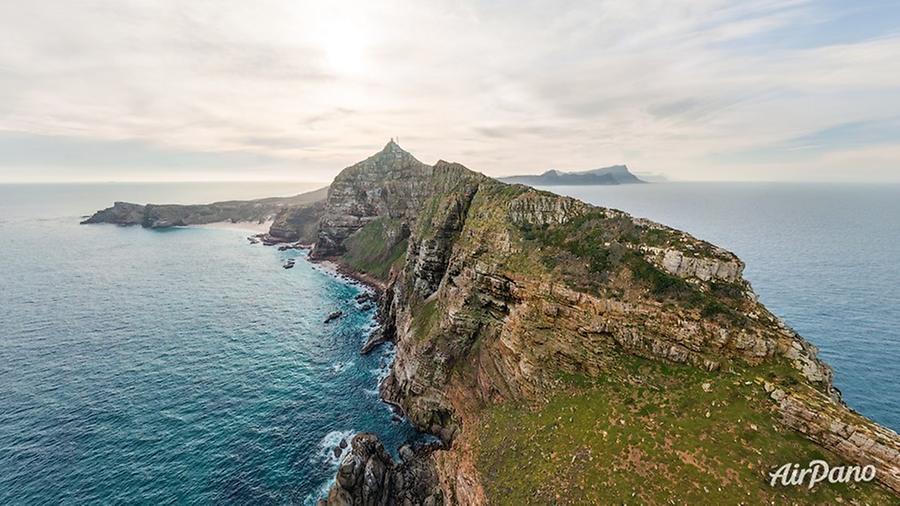
© AirPano
Having climbed to the top of Signal Hill that overlooked the centre of Cape Town, I saw a bleak picture: along the northern slope of Table Mountain, almost from the foot to its top, there was a continuous fire front, the smoke from which was blown into the city by the wind and then into the ocean. On that day, the wind was so strong that the fire helicopters could not take off, and the ground crews could only seek to contain the fire in the areas adjacent to the park.
I went to meet local helicopter pilots and set up equipment for filming. Kevin, the pilot with whom I was to fly, described the situation and forecast: fires occur in the park almost annually, but with strong winds, there is practically no chance to extinguish them. So it would burn until the wind dies down. Anyway, the success of taking pictures of the cityscapes was at very high risk.
Not all the suburbs were covered with smoke, so I thought I'd try to film a few footages with a ground camera. But here I was unlucky, too: on the coastline, such a strong wind was blowing that it knocked me off my feet. It raised clouds of sand that flew at an insane speed along the tide line. A beautiful sight, but it was absolutely unreasonable to use the camera in such conditions: the sand would have damaged the lenses.
The genuine extent of the disaster became apparent in the evening twilight. A lot of locals and tourists gathered on the slope of Signal Hill, located just opposite Table Mountain — from here it was possible to safely observe the fire. The park burned along the entire slope: from the road to the funicular and the very top. The wind fanned the fire like in the hearth of a furnace. At times, torches of flame from another flared tree soared a few hundred feet above the slope. A beautiful and scary sight. I thought at that moment: it must be impossible to put out this kind of fire quickly.
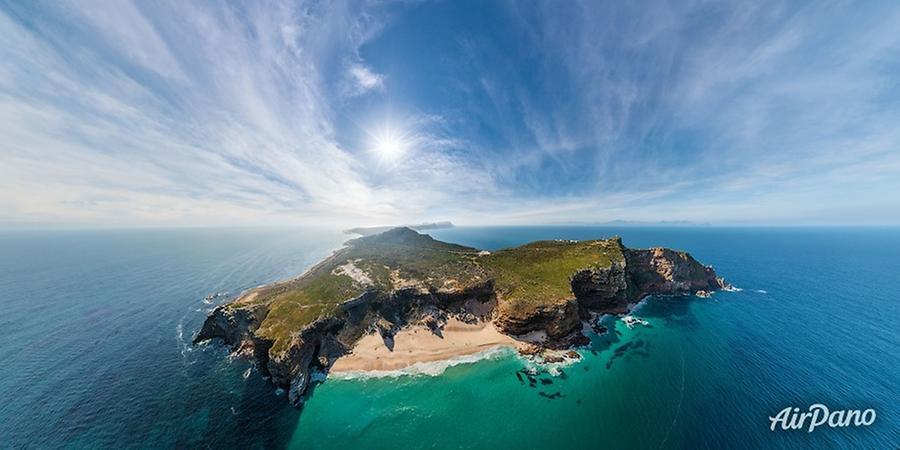
© AirPano
The situation did not change the next day. I was very fortunate that my hotel was located on the coast, in an area ‘sheltered' from fire by Signal Hill. The smoke practically did not reach there. The city centre was still blocked by dense smog, and I decided to go to Boulders Beach to take pictures of the local penguin colony.
If you happen to visit Cape Town and have never seen penguins in their natural habitat before, then you should definitely go to Boulders. It consists of two parts: ‘large' and 'small' beaches. On the ‘large' beach, penguins can only be observed from wooden platforms; it is forbidden to leave them. But on the ‘small' beach, you can even swim next to these amazing birds. Admittedly, there are a lot of people willing to do that: sometimes long queues occur at the entrance to the park since the number of visitors is limited.
I was lucky: when I went there, the number of tourists was significantly fewer than penguins. A little jumping over the rocks and I managed to find a secluded corner of the ‘small' beach with no people at all. The penguins are not afraid of humans here, but not enough to be approached very close. So, I had to be inventive to put the camera on a tripod closer to these birds and, without disturbing them, capture several scenes. In a little while, the park staff came up to me, looked at my equipment and the shooting process, nodded and said that everything was ok: this is a rare case in the era of global bans on any activity in wildlife parks.
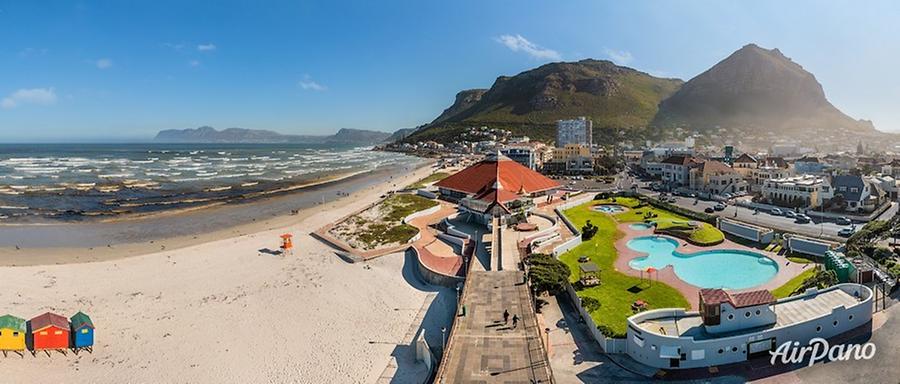
© AirPano
The wind in Cape Town died down by the morning of the following day, and by evening, as Kevin had predicted, the fire was defeated. The blaze was extinguished by dropping water from helicopters. A day later, the smoke finally cleared and we could start aerial filming. However, everything turned out to be not as simple as it seemed initially. Having made the first test flight over the city and when I checked the results I was shocked. Almost all the footage was worthless because of the shaking of the cameras during the flight. This is the first time I've encountered such a phenomenon: usually, our camera gimbal smooths the shaking and jerking of the helicopter without any problems.
Having checked the filmed material, we found out that the landing gear of the helicopter was strongly vibrating. According to the safety rules for flying over the ocean, all local helicopters have a system of quick-inflated floats attached to the landing gear so that during an emergency landing on the water there is a chance to stay on the surface. As Kevin suggested, apparently these floats made the gear vibrate at speed. This did not affect flight safety in any way, but it was not possible to shoot in the usual way: our system must always lean against the landing gear of a helicopter during the flight, and it was impossible to dismantle the floats.
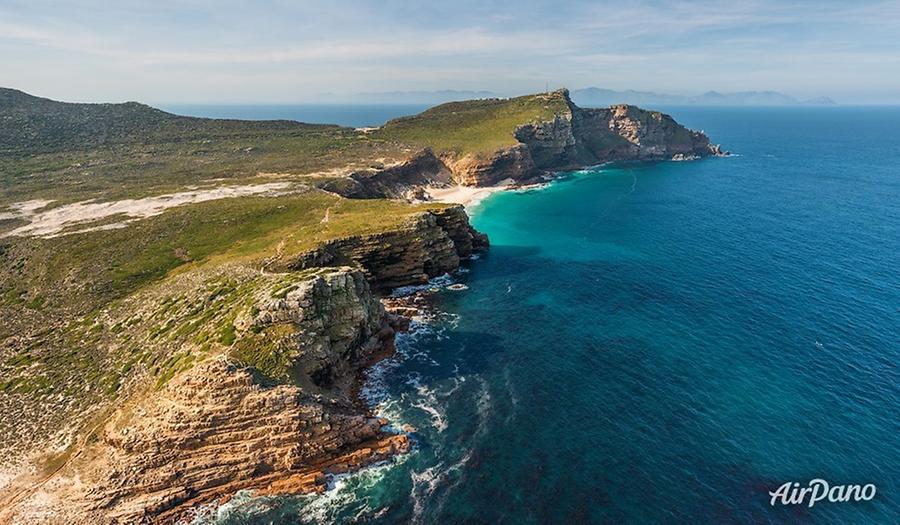
© AirPano
After consideration, I asked the pilot to fly at the lowest possible speed during filming (most pilots really do not like to do this), and I decided to keep the camera system with a pole in my hands, without attaching it to the landing gear. We made another test flight, and it turned out that we managed to overcome the problem: the vibration in the frame disappeared. However, it was difficult to keep the equipment elevated for a long time, and I had to put the system against the landing gear from time to time to give the hands a little respite.
One can suppose that flying over a city with a camera sticking out of a helicopter in the hands of an operator is an absolutely crazy thing! I can assure you that all the elements of our system are belayed with a steel cable which is fastened in the cockpit before departure. Without such protection, no pilot in the world would agree to operate such flights.
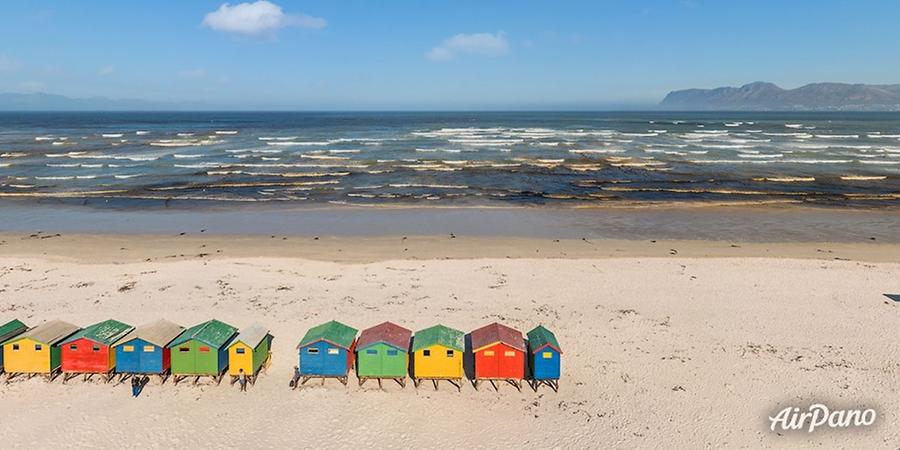
© AirPano
After all my adventures in the early days of filming in Cape Town, I finally got the confidence that all the problems were behind me and I could finally start working. However, the autumn weather on the Atlantic coast of South Africa is very unstable, and the time of my flight had to be constantly rescheduled.
While I was waiting for the right conditions, I captured cityscapes from the ground. Before flying to South Africa, I read about the dangers of this country. In reality, either I was lucky or the stories of robberies in the streets in broad daylight were greatly exaggerated. I walked through almost the entire city centre with expensive equipment on my shoulder. It was a little uncomfortable only in the Bo-Kaap area: the audience looked disapprovingly at my camera.
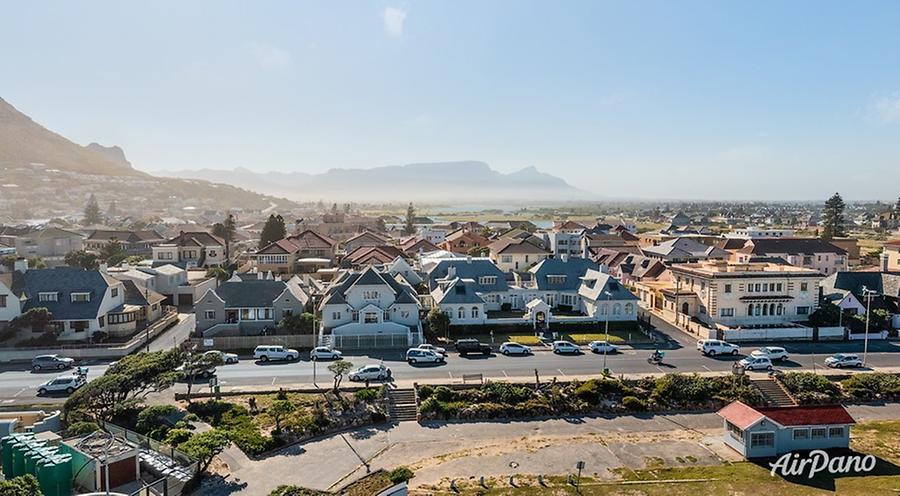
© AirPano
A couple of funny moments occurred in this neighbourhood of colourful houses. Soon after I started to work, I noticed that I was being watched by a group of local guys of unfriendly appearance. Without waiting for them to show a more active interest in me, I was the first to approach and, saying that I was working on a documentary, I asked for permission to film them as well. The elder immediately refused, citing his own matters, and the group quickly disappeared into some alley. A little later, while filming on one of the streets with a magnificent view of the city centre, another local came up to me. Asking what I was doing, he smiled and said:
‘Do you know that everything you see in front of you used to be the ocean?'
‘Indeed?'
‘The Dutch built dams and carved this land out from the sea!'
It's hard to say whether it's true or false, but the information turned out to be interesting. It explains the location of the historic cannon batteries on the hillside: if there used to be a bay, the guns could have it under total control! But this information is the last thing I expected to hear in an area that is considered unfavourable!
The next day I was finally lucky: the weather was good for flying, even though a little fog came from the ocean to the coast. Kevin and I boarded a helicopter and, having passed the city, headed towards the legendary Cape of Good Hope. We flew along the west coast of Africa, over huge sandy beaches. The places are absolutely beautiful and almost deserted. Kevin explained that the water in the Atlantic, even in the hottest season, does not warm up enough for comfortable swimming due to the cold Antarctic current. On the coast, you can only see surfers in wetsuits and horse riding tourists.
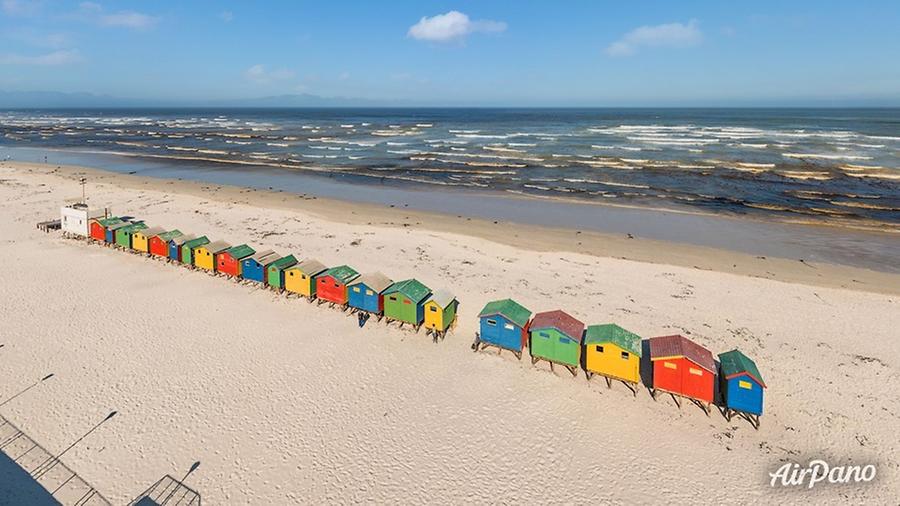
© AirPano
The Cape of Good Hope is not the southernmost point of the continent, it is the most extreme point in the southwest of Africa. This misconception is related to the fact that the Cape of Good Hope lighthouse is being installed at nearby Cape Point. In our video you can see both of these capes, they are located nearby. Kevin and I flew a few laps over them before turning back to the city.
After the flight, I said goodbye to the pilot, jumped into the car and rushed to the capes by land. I had the strongest desire to walk along this ‘end of the world' and take a few more shots. The area around Cape Point and the Cape of Good Hope is a national park accessible by car. It's hard to get along without a vehicle here: it takes almost half an hour to get from the entrance to the parking lots located near the viewpoints.
There is a trail leading from the parking lot to the cliff, which offers a panoramic view of the Cape of Good Hope and it turned out to be quite extreme for an ordinary tourist. I would definitely not go there with the children! To be honest, visually I was not impressed by the Cape of Good Hope. Especially after I managed to follow the trails of Cape Point. Apparently, lighthouses, especially when there are two of them, are much more attractive to the eye. In addition, the Cape Point mountain range is higher and steeper. There is even a funicular running from the parking lot to the upper observation deck. The view from here is absolutely breathtaking! It is a pity that the closing time of the park did not allow me to wait for the sun to set. At half-past five in the evening, I headed back.
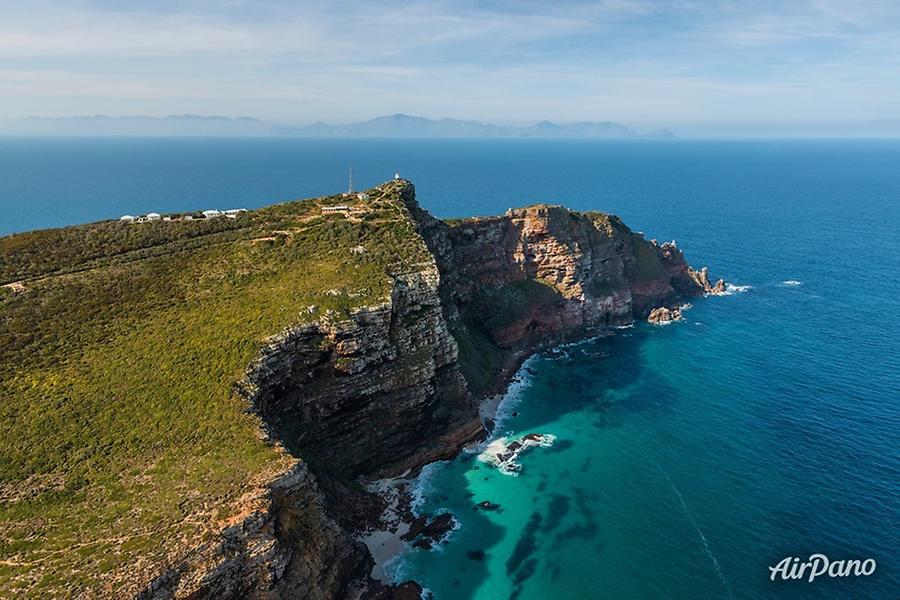
© AirPano
However, I did not manage to leave this place right away. At the very first crossroad, I had to stop because of several cars blocking the road. These vehicles of the tourists, in turn, were stopped by indigenous wildlife. A family of baboons was sitting on the asphalt and quite explicitly offered to ‘pay the fare'. And although the posters hanging everywhere in the park had the inscription not to feed the baboons, tourists still gave them some fruits and cookies from the windows for the opportunity to take a few photos and then continue their journey.
That was it, my work in Cape Town was completed and I was about to get ready for the way home, but during a pandemic, things don't go smoothly. The day before my flight to Moscow, I received a message that due to the changed transit rules, I could not make my way through Amsterdam. I had to urgently look for other options, which, by the way, were very few. Luckily for me, I managed to buy tickets and fly home through a complicated route via Ethiopia and Athens. But after all the adventures experienced in Cape Town, all this was no longer surprising, just as the snowbanks at the end of April upon arrival in Moscow could not confuse me anymore!
11 panoramas of Cape Town and Surroundings